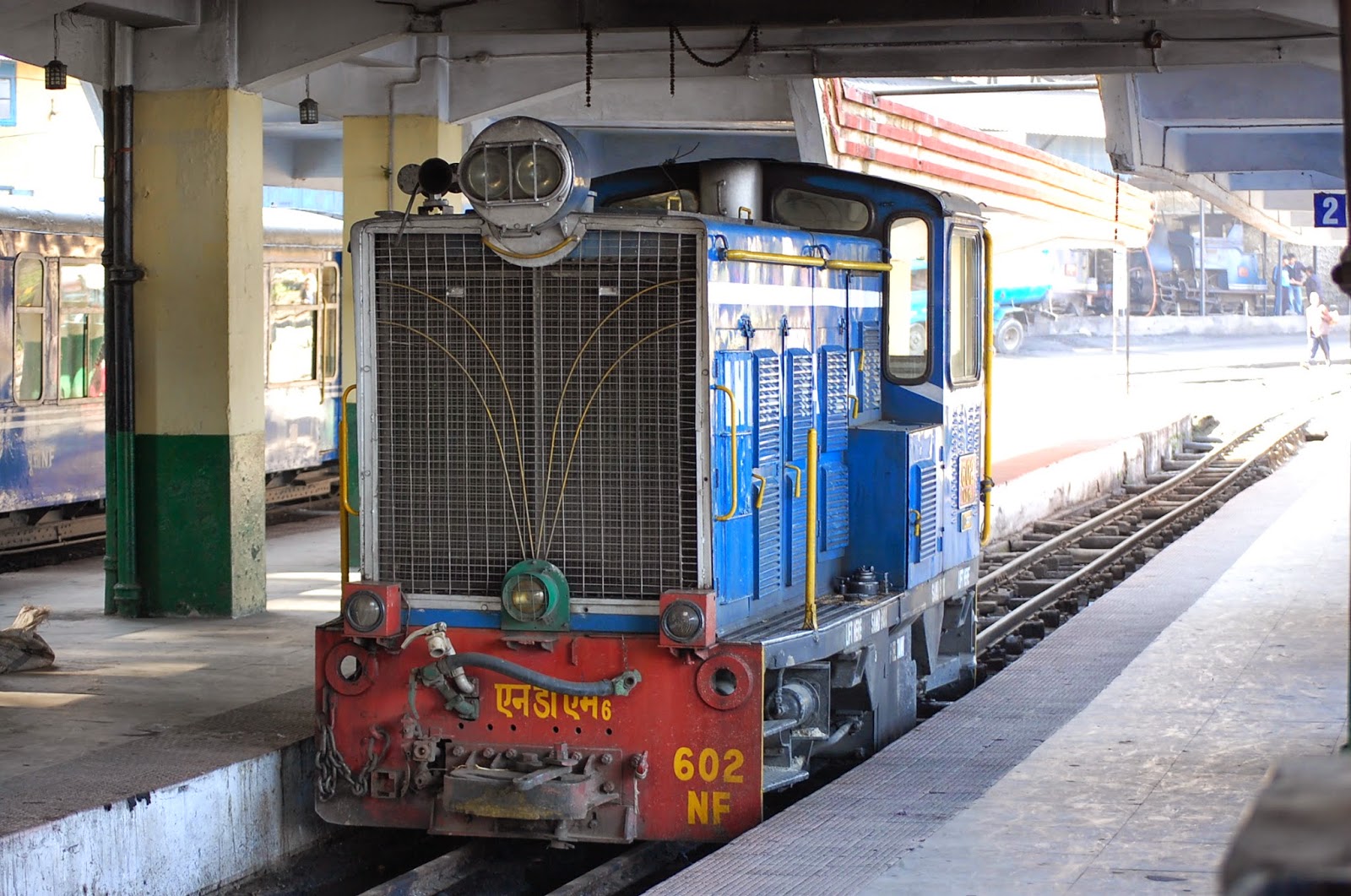Darjeeling Himalayan Railway
Now for the reason that I traveled all this way, The Darjeeling Himalayan Railway. Also known as the "Toy Train", it is a 2ft wide
(
610 mm) narrow gauge railway railway that runs between New Jalpaiguri and Darjeeling in West Bengal India.
This magnificent feat of engineering was built between 1879 and 1881, and is 78 km long. It begins at the elevation of about 100 metres (328 ft)
at New Jalpaiguri to about 2,200 metres (7,218 ft) at Darjeeling. Four
modern diesel locomotives handle most of the scheduled services; however
the daily Kurseong-Darjeeling return service and the daily tourist
trains from Darjeeling to Ghum (India's highest railway station) are handled by the vintage British-built B Class steam locomotives - DHR778. However as mentioned in my earlier post, due to a landslide in 2010, the line now is only between Kurseong and Darjeeling.
DHR was declared a World Heritage site by UNESCO in 1999, along with the Nilgiri Mountain Railway and the Kalka-Shimla Railway, is listed as a Mountain Railways of India World Heritage site.
The station at Darjeeling is a landmark in the center of the town, with the station platform on the left and you enter the town, with the locomotive shed on the right with the road in the middle.
 |
| The station and platforms |
 |
| Loco shed on the right |
 |
| The beautiful steam locomotive |
Train enthusiast would love the fact that you can walk up close to the trains, touch and feel all you want.
 |
| Refurbished in 2007 |
 |
| First Class |
 |
| Third Class |
 |
| The tiny turntable |
There are also four diesel locomotives of the NDM6 class transferred from the Matheran Hill Railway that operate the services from the lowland but due to the land slide, they now only operate the normal service to Kurseong leaving the Steam locomotives to operate the tourist train to Ghum
One of the main difficulties faced by the DHR was the steepness of the climb. To overcome those problems loops and Z-reverses were designed different points
along the route to achieve a comfortable gradient for the stretches in
between them. When the train moves forwards, reverses and then moves
forward again, climbing a slope each time while doing so, it gains
height along the side of the hill. Once the whole stretch is reopened next year I would like to take the whole 8 hour journey to experience the Z-reverses. This is a route diagram of the whole system.
 |
| from DHR Indian Railway web page |
 |
| a 1921 photo of the Agony Point loop |
 |
| Painting of a Z-reverse at the DHR Museum |
Next post will be of my 2 train rides on the DHR. Do visit again soon.





























No comments:
Post a Comment